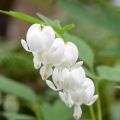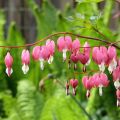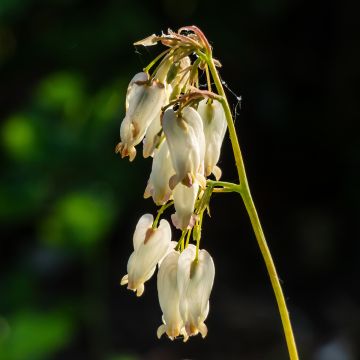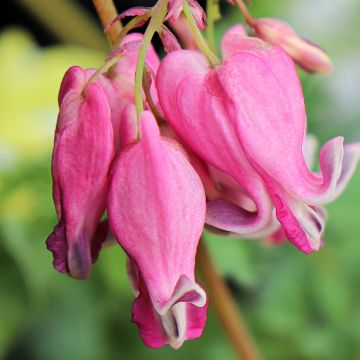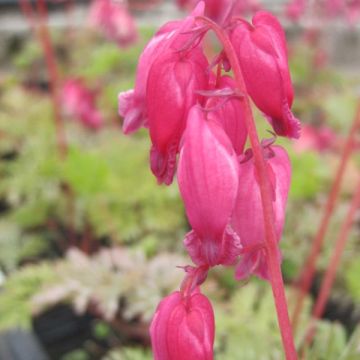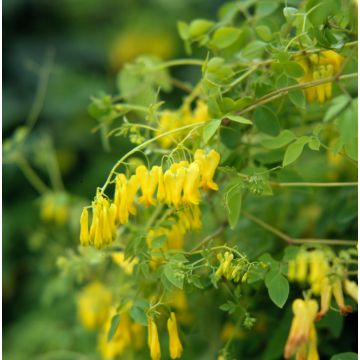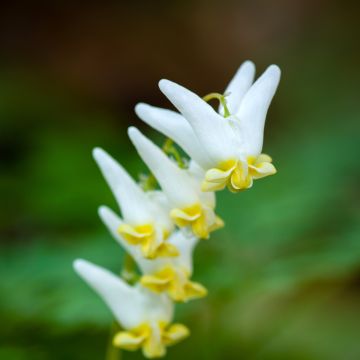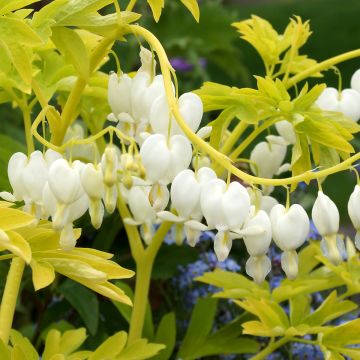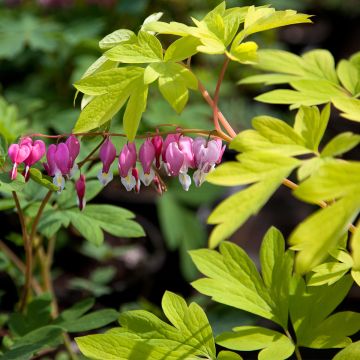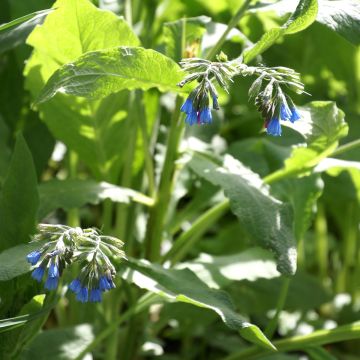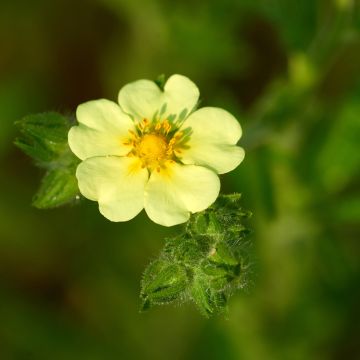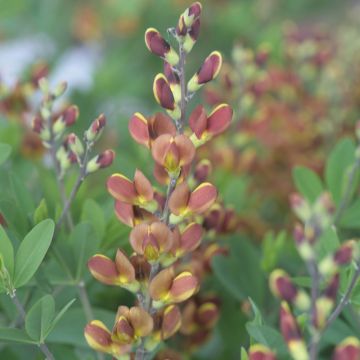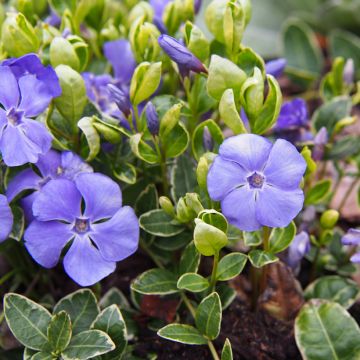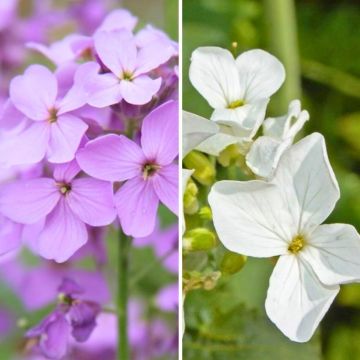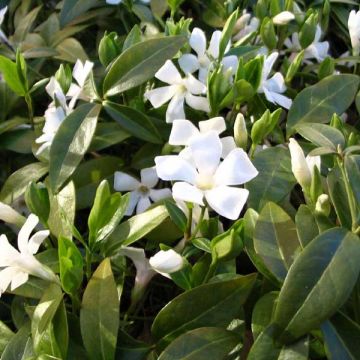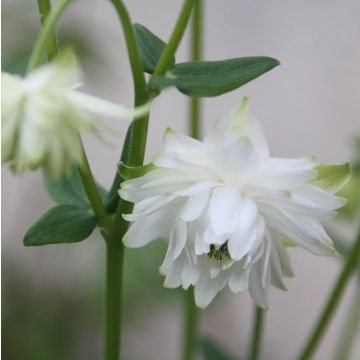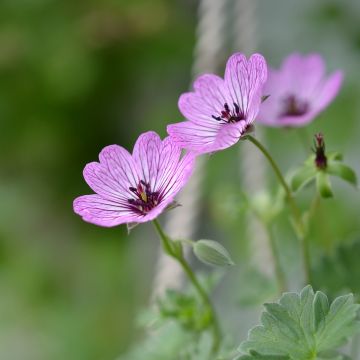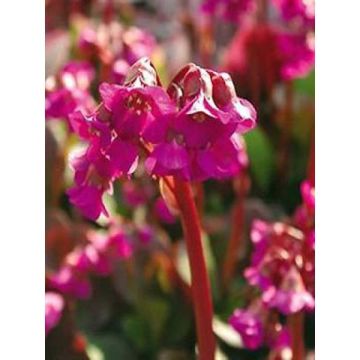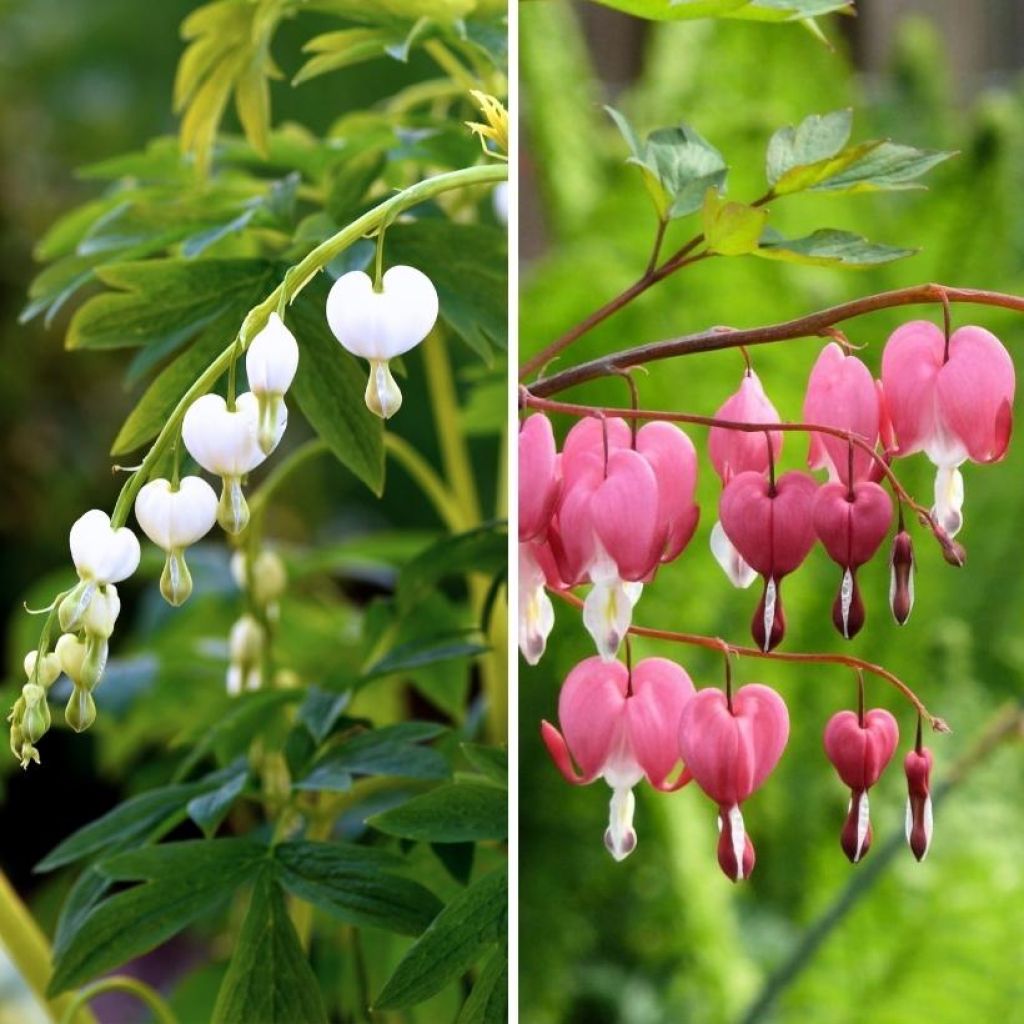

Duo of pink and white Bleeding Hearts
Duo of pink and white Bleeding Hearts
Lamprocapnos spectabilis Rose, Alba
This item cannot be shipped to the selected country
Delivery charge from €5.90
More information
Schedule delivery date,
and select date in basket
This plant carries a 12 months recovery warranty
More information
We guarantee the quality of our plants for a full growing cycle, and will replace at our expense any plant that fails to recover under normal climatic and planting conditions.
From €5.90 for pickup delivery and €6.90 for home delivery
Express home delivery from €8.90.
Does this plant fit my garden?
Set up your Plantfit profile →
Collection items (2 plants)
Description
We offer you a Duo of Pink and White Bleeding Hearts for a blooming spring in all the slightly shaded and cool areas of your garden. You can plant these perennials in small groups, under tall trees, against an east-facing wall, or even in a pot to enjoy their stems adorned with small colorful hearts up close.
The Duo consists of:
1 Lamprocapnos spectabilis: flowers in a fresh pink with white tips, the classic shape of old gardens.
1 Lamprocapnos spectabilis Alba: a version with flowers in pure white.
With its fast growth, the Bleeding Heart forms a clump that reaches a height of 60 cm when in bloom with a spread of 40-50 cm. It spreads laterally through running rhizomes, allowing it to expand if conditions are favourable and giving the plant a lush appearance as long as the soil doesn't dry out. Dicentra, now known as Lamprocapnos, are sturdy perennials that only dislike excessive winter moisture and summer drought. It is common for them to go dormant at the end of the flowering season, so there is no need to worry. However, to prevent too early a "disappearance," the soil should remain moist in summer and be rich in humus and shady.
Bleeding Hearts can be planted with other perennials that can withstand competition from tree or shrub roots, with a spacing of 70 cm between plants. Consider corydalis, bugbanes... In the foreground of a flower bed, pair your Bleeding Hearts with Heuchera 'Black Out', white Dame's Rocket, and Moulin Rouge Masterwort.
Most Bleeding Hearts go dormant at the end of spring, but this does not have any negative impact on plant growth.
Report an error about the product description
Flowering
Foliage
Plant habit
Botanical data
Lamprocapnos
spectabilis
Rose, Alba
Fumariaceae
Dicentra spectabilis
China
Other Dicentra - Bleeding Hearts
Planting and care
Plant Lamprocapnos in partial shade, in a mixture of garden soil and well-prepared compost. During hot weather, the foliage disappears and the plant goes into dormancy; to prevent too early a "disappearance," the soil should remain slightly moist in the summer and shaded.
The tender leaves of Bleeding Hearts are also quite sensitive to slugs and snails in the early stages of growth. Place ashes, eggshells, or, if unavailable, granules suitable for organic agriculture around the base of the plant.
Planting period
Intended location
Care
This item has not been reviewed yet - be the first to leave a review about it.
Spring flowering perennials
Haven't found what you were looking for?
Hardiness is the lowest winter temperature a plant can endure without suffering serious damage or even dying. However, hardiness is affected by location (a sheltered area, such as a patio), protection (winter cover) and soil type (hardiness is improved by well-drained soil).

Photo Sharing Terms & Conditions
In order to encourage gardeners to interact and share their experiences, Promesse de fleurs offers various media enabling content to be uploaded onto its Site - in particular via the ‘Photo sharing’ module.
The User agrees to refrain from:
- Posting any content that is illegal, prejudicial, insulting, racist, inciteful to hatred, revisionist, contrary to public decency, that infringes on privacy or on the privacy rights of third parties, in particular the publicity rights of persons and goods, intellectual property rights, or the right to privacy.
- Submitting content on behalf of a third party;
- Impersonate the identity of a third party and/or publish any personal information about a third party;
In general, the User undertakes to refrain from any unethical behaviour.
All Content (in particular text, comments, files, images, photos, videos, creative works, etc.), which may be subject to property or intellectual property rights, image or other private rights, shall remain the property of the User, subject to the limited rights granted by the terms of the licence granted by Promesse de fleurs as stated below. Users are at liberty to publish or not to publish such Content on the Site, notably via the ‘Photo Sharing’ facility, and accept that this Content shall be made public and freely accessible, notably on the Internet.
Users further acknowledge, undertake to have ,and guarantee that they hold all necessary rights and permissions to publish such material on the Site, in particular with regard to the legislation in force pertaining to any privacy, property, intellectual property, image, or contractual rights, or rights of any other nature. By publishing such Content on the Site, Users acknowledge accepting full liability as publishers of the Content within the meaning of the law, and grant Promesse de fleurs, free of charge, an inclusive, worldwide licence for the said Content for the entire duration of its publication, including all reproduction, representation, up/downloading, displaying, performing, transmission, and storage rights.
Users also grant permission for their name to be linked to the Content and accept that this link may not always be made available.
By engaging in posting material, Users consent to their Content becoming automatically accessible on the Internet, in particular on other sites and/or blogs and/or web pages of the Promesse de fleurs site, including in particular social pages and the Promesse de fleurs catalogue.
Users may secure the removal of entrusted content free of charge by issuing a simple request via our contact form.
The flowering period indicated on our website applies to countries and regions located in USDA zone 8 (France, the United Kingdom, Ireland, the Netherlands, etc.)
It will vary according to where you live:
- In zones 9 to 10 (Italy, Spain, Greece, etc.), flowering will occur about 2 to 4 weeks earlier.
- In zones 6 to 7 (Germany, Poland, Slovenia, and lower mountainous regions), flowering will be delayed by 2 to 3 weeks.
- In zone 5 (Central Europe, Scandinavia), blooming will be delayed by 3 to 5 weeks.
In temperate climates, pruning of spring-flowering shrubs (forsythia, spireas, etc.) should be done just after flowering.
Pruning of summer-flowering shrubs (Indian Lilac, Perovskia, etc.) can be done in winter or spring.
In cold regions as well as with frost-sensitive plants, avoid pruning too early when severe frosts may still occur.
The planting period indicated on our website applies to countries and regions located in USDA zone 8 (France, United Kingdom, Ireland, Netherlands).
It will vary according to where you live:
- In Mediterranean zones (Marseille, Madrid, Milan, etc.), autumn and winter are the best planting periods.
- In continental zones (Strasbourg, Munich, Vienna, etc.), delay planting by 2 to 3 weeks in spring and bring it forward by 2 to 4 weeks in autumn.
- In mountainous regions (the Alps, Pyrenees, Carpathians, etc.), it is best to plant in late spring (May-June) or late summer (August-September).
The harvesting period indicated on our website applies to countries and regions in USDA zone 8 (France, England, Ireland, the Netherlands).
In colder areas (Scandinavia, Poland, Austria...) fruit and vegetable harvests are likely to be delayed by 3-4 weeks.
In warmer areas (Italy, Spain, Greece, etc.), harvesting will probably take place earlier, depending on weather conditions.
The sowing periods indicated on our website apply to countries and regions within USDA Zone 8 (France, UK, Ireland, Netherlands).
In colder areas (Scandinavia, Poland, Austria...), delay any outdoor sowing by 3-4 weeks, or sow under glass.
In warmer climes (Italy, Spain, Greece, etc.), bring outdoor sowing forward by a few weeks.

































